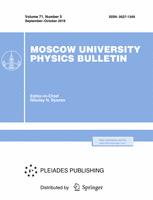The features of thermal bar development and currents associated with it in a fresh-water reservoir during ice breakup in the spring are discussed. A mathematical model is defined in order to study the thermohydrodynamic process in a reservoir in both ice-free and partially covered conditions with ice of different thicknesses and lengths. Three specific phases of thermal-bar development were revealed for a reservoir covered with ice in the central part. It is shown that the features of reservoir currents in this case are connected with the formation of a deep convective vortex near the ice cover edge, which is a barrier to thermal-bar propagation. Estimation of the propagation velocity of a thermal bar during different phases of its development showed that it is independent of the presence of ice cover on the reservoir surface until the instant of its approach to the deep vortex. It was found that the lifetime of a thermal bar can differ by several times in the spring in a reservoir that is free of ice or partially covered with ice, depending on the thickness and length of the ice cover.
Faculty of Physics, Moscow State University, Moscow, 119991, Russia



